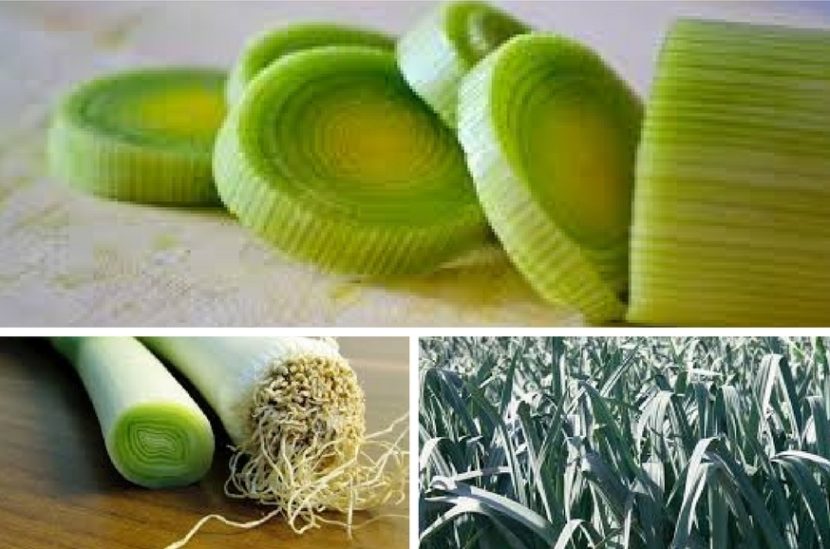Allium porrum
Cultivation
Grow from seedlings or directly from seeds in the regular spot. Cultivate seedlings in a cool, protected place, and enable higher temperatures for germination. When transplanting, shorten the root system to strengthen it and cover the soil with organic mulch. It grows above 7 °C (45 °F); optimum temperatures are around 20 °C (68 °F).
Distance between plants
At least 40 cm (15 in) between rows and at least 10 cm (or rather 20 cm) (4-8 in) between plants in a row.
Location
Half-shaded.
Amount
Approx. 10 plants per person.
Time of planting
January (seedlings) – June (overwintering varieties). It germinates in two weeks.
Fertilization
With home compost. Use barn manure only if some other plant will grow in the garden bed before. In the period of intensive leaf growth use additional fertilizers (compost, ash, nettle/comfrey mulch).
Watering
It needs a lot of water. Water 20 cm (8 in) deep twice a week. You can water the leaves as well, but only in the morning.
Leek’s good neighbors
Carrots, endive, cucumbers, black salsify, tomatoes, parsley, lettuce, cabbage, celery.
Leek’s bad neighbors
Onions, beans, peas, broad beans, chickpea, soybean.
Diseases and pests
Leek moth, thrips. Set adhesive fly boards near and when the first flies are caught, cover the leek tightly (with arches above the plants) until October.
Leek’s storage
Many sorts can survive winter outside. The best storage is in the garden, covered with soil, or in the fridge for a few weeks. It should be stored together with roots and can be dried or frozen as well.
Food
Use the white stem and a part of the green leaves. It contains even more vitamins and minerals than onions, but less natural antibiotics.
Important
It needs soft soil and benefit from transplanting. Low, strong varieties of leek survive winter easy. To make the swollen part of the stem longer, cover up to its first leaves.
Miscellaneous
It is the only bulb vegetable that doesn’t irritate the stomach. It can be eaten trough the whole year.

